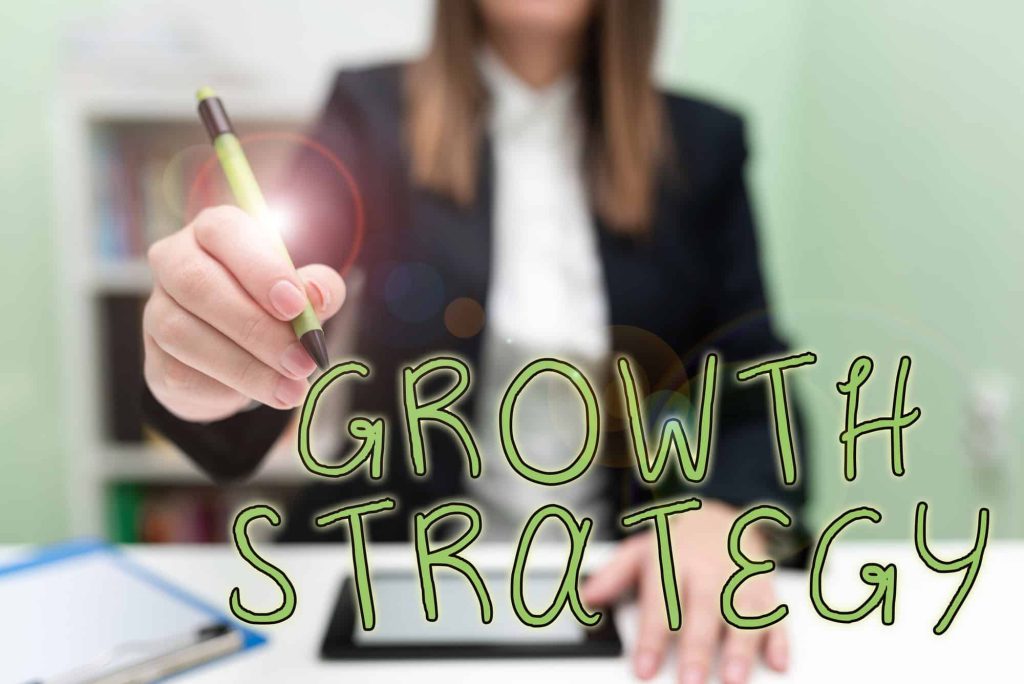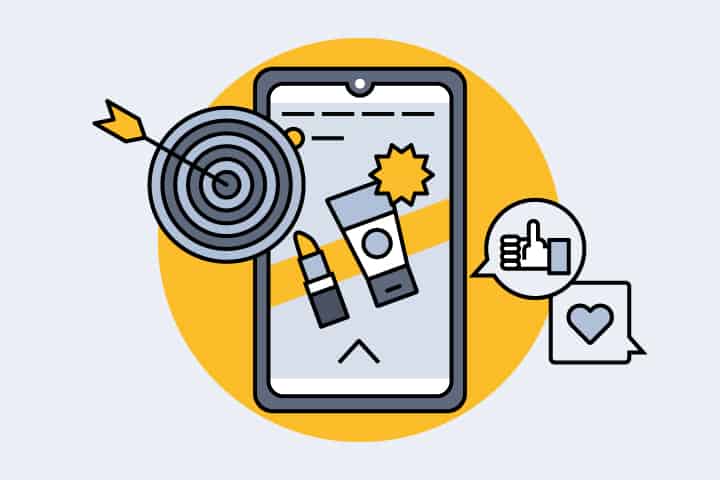The way we communicate has undergone a revolutionary transformation over the last few decades, morphing from simple, direct interactions to a complex web of digital platforms that connect billions of people across the globe. Let’s dive into how this evolution has unfolded and the current trends that are shaping the digital spaces we frequent.
The Evolution of Online Interactions
Remember the days when “You’ve got mail!” was the most exciting phrase of the day? Fast forward, and the digital communication landscape is now a bustling metropolis, teeming with social media sites, networking platforms, and instant messaging apps. The journey from the infancy of email and bulletin board systems to today’s sophisticated platforms marks a significant leap in how we connect, share, and engage with one another.
The rise of platforms like Facebook, Twitter, LinkedIn, and Instagram has not only changed the way we communicate but has also redefined our social interactions. These platforms allow for the immediate sharing of ideas, opinions, and experiences, enabling real-time participation in global conversations. Moreover, they’ve paved the way for new forms of content creation and distribution, turning ordinary users into influencers and content creators with vast followings.
Current Trends Shaping Social Digital Spaces
As we navigate through these digital social spaces, several key trends have emerged, significantly influencing user experience and engagement:
- Video Content: The saying “a picture is worth a thousand words” might need updating. In today’s digital age, a video could be worth a million. Platforms like YouTube, TikTok, and Instagram Reels have seen exponential growth, driven by user appetite for engaging, dynamic content. According to a report by Cisco, video content will account for 82% of all internet traffic by 2022.
- Ephemeral Content: Snapchat kickstarted the trend of content that disappears after 24 hours, and others quickly followed suit. This trend speaks to the desire for more authentic, less polished content among users, fostering a sense of immediacy and intimacy.
- The Role of AI: Artificial intelligence is no longer just a buzzword but a pivotal component of social media and networking sites. From personalizing user feeds to enhancing content discoverability, AI’s role in curating user experiences is indispensable. It’s also behind the scenes in more subtle ways, like moderating content and detecting fraudulent activities.
- Here are some bullets for quick takeaways:
- Video content dominates user engagement, making it a critical component of any social platform’s strategy.
- Ephemeral content appeals to users’ desire for authenticity, driving higher engagement rates.
- AI is shaping the user experience, from content discovery to security measures.
As we delve into these trends, it’s clear that the landscape of digital communication is continually evolving. By understanding these developments, individuals and businesses can better navigate the complex web of social media and networking platforms, leveraging these tools to foster connections, share insights, and build communities in this digital age.
Defining the Core: What is Social Media?

In the digital age, social media has become a ubiquitous part of our daily lives, but what exactly falls under the umbrella of social media? Let’s unpack this concept and explore the diverse landscape of platforms that connect us in more ways than one.
The Broad Spectrum of Social Media Platforms
Social media is a chameleon in the digital world, constantly evolving and taking on various forms. At its heart, it’s about connecting people and facilitating the share of information, but the way this is done varies wildly across different platforms.
- Content Sharing Platforms: Think of Instagram and Pinterest, where the focus is on visual storytelling. These platforms are a haven for creatives who want to share their work or for anyone looking to find inspiration in the posts of others.
- Microblogging Services: Twitter is the poster child here, allowing users to broadcast short messages to the world. It’s the digital equivalent of standing on a soapbox in the town square, except your audience is global.
- Multimedia Sharing: YouTube and TikTok dominate this space, offering platforms for sharing video content ranging from short, catchy clips to longer, more detailed guides and vlogs.
These platforms, while diverse, share a common goal: to provide a space for expression, interaction, and connection. They’ve become integral to how we consume information, entertain ourselves, and communicate with others.
The Role of Social Media in Today’s Society
The impact of social media on society is profound and far-reaching. It has not only changed how we interact with each other but has also influenced culture, politics, and personal relationships in significant ways.
- Cultural Influence: Social media has given rise to viral trends, memes, and movements that span the globe. It’s a tool for cultural exchange and a stage for showcasing creativity. The ALS Ice Bucket Challenge, for example, was a social media phenomenon that raised awareness and funds for ALS research.
- Political Impact: Platforms like Facebook and Twitter have become arenas for political discourse, enabling politicians to communicate directly with constituents. They’ve also played pivotal roles in organizing protests and social movements, as seen in the Arab Spring.
- Personal Relationships: On a more personal level, social media has transformed how we maintain relationships. It enables us to stay connected with friends and family members around the world, sharing life updates, photos, and messages instantly.
However, it’s not all roses. The pervasive nature of social media raises concerns about privacy, mental health, and the spread of misinformation. A study by Pew Research Center highlights that while social media fosters connections, it also contributes to social isolation and anxiety among some users.
Social media is a double-edged sword, with the power to connect and divide. Its role in society is complex, reflecting the best and worst of human nature. As we continue to navigate this digital terrain, it’s essential to foster a critical understanding of social media’s impact and how it shapes our world.
Understanding Social Networking: Beyond Connecting People
Social networking sites have become the digital fabric that weaves together our social and professional lives. But what exactly makes these platforms so integral to our daily interactions and career advancements? Let’s peel back the layers.
The Essence of Social Networking Sites
At their core, social networking sites are more than just digital spaces for sharing memes and catching up with high school friends. They’re powerful tools for building communities and forging professional connections.
- Community Building: Platforms like Facebook and LinkedIn offer groups and forums where individuals with shared interests can gather, exchange ideas, and offer support. Whether you’re passionate about vintage cars or digital marketing, there’s a community waiting for you.
- Professional Networking: LinkedIn, the epitome of professional networking sites, enables career-minded individuals to connect, share insights, and uncover job opportunities. It’s not just about who you know; it’s about who knows you.
These platforms serve dual purposes: nurturing personal interests and hobbies while also acting as springboards for professional growth. It’s a blend of the personal and professional that reflects the multifaceted nature of our lives in the digital age.
How Social Networking is Changing the Professional Landscape
The impact of social networking on the professional world cannot be overstated. It has transformed how we seek jobs, build personal brands, and stay ahead in our industries.
- Job Hunting and Recruitment: Gone are the days of scouring newspaper classifieds for job openings. Now, companies and job seekers alike use sites like LinkedIn to find the perfect match. According to a survey by Jobvite, 77% of recruiters regularly use LinkedIn to search for candidates.
- Professional Development: Social networking sites offer unparalleled access to industry news, insights, and resources. They’re platforms for learning and growth, where sharing a thought-provoking article can spark discussions and forge connections with industry peers.
- Industry Networking: Building a network is now as simple as hitting the ‘connect’ button. But it goes deeper than digital handshakes; it’s about engaging with others’ content, sharing your expertise, and participating in industry conversations.
Here are a few key takeaways:
- Social networking sites are invaluable for community building and professional networking.
- They’ve revolutionized job hunting, making the process more dynamic and interconnected.
- Continuous learning and industry engagement are at your fingertips, facilitating professional growth in ways that were previously unimaginable.
Distinguishing Between Social Media and Social Networking
In the ever-evolving digital landscape, social media and social networking are terms that often get used interchangeably. However, they serve distinct purposes and understanding the differences can help us navigate them more effectively. Let’s demystify these concepts.
Key Differences That Set Them Apart
At first glance, social media and social networking might seem like two sides of the same coin. Yet, they cater to different aspects of our digital lives.
- User Intent: The primary distinction lies in why users flock to these platforms. Social media is a broader term that encompasses platforms designed for sharing and consuming content—be it videos, articles, or images—with a wide audience. Think YouTube, Instagram, or Twitter, where the focus is on broadcasting and interaction with content. Social networking, on the other hand, zeroes in on building and nurturing personal or professional relationships. LinkedIn, for instance, is a platform that facilitates professional networking and career development.
- Functionality: Social media platforms are equipped with features that emphasize content creation, sharing, and discovery. They are the digital megaphones through which individuals or brands amplify their voices. Social networking sites, conversely, focus on establishing connections and engaging in conversations, often in a more private or semi-private setting.
- Examples to Illustrate:
- Social Media: Instagram for visual storytelling, Twitter for quick updates and trends, YouTube for video content.
- Social Networking: LinkedIn for professional connections, Facebook Groups for community building around shared interests.
Complementary Yet Distinct: How Both Fit into Our Lives
Understanding these differences begs the question: How can we use both social media and social networking to our advantage?
- Brand Building: For businesses and personal brands, social media serves as the platform for broadcasting your message and engaging with a broad audience. It’s where you tell your story, showcase your products, or share insights. Social networking, however, is where you deepen those connections, engage in one-on-one conversations, and build a community around your brand.
- Personal Communication: On a personal level, social media allows us to share life updates, celebrate achievements, and express our creativity with friends, family, and sometimes, strangers. Social networking plays a crucial role in maintaining and strengthening those relationships, facilitating more intimate conversations and interactions.
Here’s a quick breakdown:
- Use social media to share, inspire, and entertain a broad audience.
- Turn to social networking for engaging in meaningful conversations and building lasting relationships.
Leveraging Social Platforms for Growth: Strategies for Users and Marketers

Navigating the vast world of social media and networking sites can be a daunting task, especially if you’re aiming to use these platforms for growth. Whether you’re building a brand, promoting a business, or simply looking to enhance your personal online presence, understanding the best practices for engagement and networking is key. Let’s dive into some strategies that can help you shine on these platforms.
Best Practices for Engaging on Social Media
Engagement is the lifeblood of social media success. But how can you capture the attention of your audience and encourage them to interact with your content?
- Content is King: The cornerstone of any social media strategy is high-quality, relevant content. Whether it’s insightful blog posts, captivating videos, or eye-catching graphics, your content should provide value to your audience. Remember, it’s not just about selling a product or service; it’s about starting conversations and sharing ideas.
- Consistency is Key: Establishing a consistent posting schedule keeps your audience engaged and helps build a loyal following. Tools like Hootsuite or Buffer can help you manage your content calendar and ensure you’re always in the loop.
- Engage with Your Audience: Social media is a two-way street. Responding to comments, participating in discussions, and acknowledging your followers can foster a sense of community and loyalty. A simple “Thank you” goes a long way.
- Stay on Trend: Keeping up with the latest trends and hashtags can increase your visibility and attract new followers. However, it’s important to stay true to your brand and only engage with trends that align with your message.
Networking Like a Pro: Tips for Social Networking
Social networking sites offer a unique opportunity to build professional connections and grow your career or business. Here are some tips to network effectively:
- Personalize Your Connections: When reaching out to new contacts, personalize your message. A generic “Let’s connect!” lacks sincerity. Mention a shared interest or how their work has inspired you to make a stronger impression.
- Share Your Expertise: Sharing your knowledge and insights can establish you as a thought leader in your field. Participate in forums, answer questions, and contribute valuable content to discussions.
- Build Relationships, Not Just Contacts: Quality over quantity. It’s better to have a smaller network of meaningful connections than a large network of superficial ones. Focus on fostering genuine relationships with your connections.
Here are some quick takeaways:
- Quality content and consistency in posting can significantly boost your social media engagement.
- Personal interaction with your audience helps in building a loyal community.
- Networking on platforms like LinkedIn should be genuine and personalized, aiming to build lasting relationships rather than just increasing your contacts list.
Navigating the Challenges and Solutions in Social Platforms
The digital age has ushered in unparalleled connectivity and access to information. However, navigating social media and networking platforms isn’t without its hurdles. From privacy concerns to the phenomenon of social burnout, users face a variety of challenges in these digital spaces. Let’s explore some practical ways to address these issues and maintain a healthy, secure online presence.
Overcoming Privacy Concerns and Security Risks
In an era where data breaches seem to be a regular headline, protecting your personal information on social platforms has never been more critical. Here’s how you can bolster your online privacy and security:
- Review Privacy Settings: Regularly check and adjust your privacy settings on each platform to control who can see your posts, profile, and personal information. It’s surprising how many people overlook this simple step.
- Be Mindful of What You Share: Think twice before posting personal details that could be used against you, such as your home address, phone number, or when you’re away on vacation. Remember, the internet never forgets.
- Use Strong, Unique Passwords: This can’t be stressed enough. Avoid using the same password across multiple sites and consider using a password manager to keep track of your credentials.
- Enable Two-Factor Authentication (2FA): Adding an extra layer of security can significantly reduce the risk of unauthorized access to your accounts.
Dealing with Information Overload and Social Burnout
Have you ever felt overwhelmed by the constant stream of notifications and updates? You’re not alone. Here are some strategies to help manage information overload and prevent social burnout:
- Curate Your Feed: Be selective about who you follow and what content you engage with. This can greatly reduce the amount of irrelevant information cluttering your feed.
- Set Time Limits: Use built-in features or third-party apps to limit your daily social media use. Allocating specific times for checking social media can help prevent aimless scrolling.
- Take Digital Detoxes: Periodically stepping away from social media can refresh your mind and reduce stress. Whether it’s for a weekend or a week, disconnecting can provide a much-needed break.
- Engage in Meaningful Activities: Balance your online interactions with offline activities. Pursuing hobbies, spending time with loved ones, or simply going for a walk can help maintain your digital wellbeing.
Here are a few quick takeaways:
- Protecting your privacy online starts with understanding and utilizing the privacy settings offered by social platforms.
- Managing information overload and avoiding burnout requires conscious effort to curate your digital environment and set boundaries for your social media use.
Creating Meaningful Content: Strategies for Standing Out

In the vast ocean of online content, standing out requires more than just a catchy headline or a beautiful image. It demands authenticity, creativity, and a deep understanding of your audience’s needs and preferences. Let’s dive into some strategies that can help you create content that not only resonates with your audience but also drives engagement and fosters a sense of community.
Crafting Content That Resonates: Tips for Authenticity and Engagement
Creating content that truly resonates with your audience begins with authenticity and relevance. Here are some tips to help you connect more deeply with your followers:
- Tell Your Story: People love stories. They’re how we make sense of the world. Share your experiences, challenges, and successes. Authentic storytelling can create emotional connections and build trust.
- Understand Your Audience: Use tools and analytics to get to know your audience. What are their interests? What problems do they face? Tailoring your content to address these points can significantly increase its relevance and impact.
- Diversify Your Content: Don’t be afraid to mix things up. Blogs, infographics, podcasts, and webinars cater to different preferences and can help reach a wider audience. Variety keeps your feed fresh and engaging.
- Engagement Is a Two-Way Street: Encourage interaction by asking questions, requesting feedback, or running contests. Engagement isn’t just about broadcasting your message; it’s about starting a conversation.
Leveraging Multimedia and Interactive Elements
In the digital age, multimedia and interactive elements play a pivotal role in capturing attention and enhancing engagement. Here’s why incorporating them into your strategy is a must:
- Videos: They’re compelling and can convey complex messages in an easily digestible format. Whether it’s a behind-the-scenes look at your process or a tutorial, videos are a powerful tool for storytelling.
- Live Streams: Live streaming adds a layer of immediacy and authenticity. It’s an opportunity to interact with your audience in real-time, answer questions, and build a community.
- Polls and Quizzes: These interactive elements can boost engagement and provide valuable insights into your audience’s preferences and opinions.
- Infographics: Complex data or information can be overwhelming. Infographics break down these topics into visually appealing, easy-to-understand pieces.
Consider these points:
- Authentic storytelling creates an emotional connection.
- Diverse content formats cater to different audience preferences.
- Multimedia elements like videos and live streams can significantly enhance engagement.
The Future of Social Interaction Online: Trends and Predictions
As we stand on the brink of the next digital era, the landscape of social interaction online is poised for transformative changes. With emerging technologies like Virtual Reality (VR), Augmented Reality (AR), and Artificial Intelligence (AI) making strides, let’s explore how these innovations could redefine our social platforms and the way we connect.
Emerging Technologies Shaping the Future of Social Platforms
The integration of VR, AR, and AI into social media and networking is not just a possibility—it’s the inevitable next step in the evolution of digital communication. Here’s how these technologies are expected to shape the future:
- Virtual Reality (VR): Imagine attending a concert with friends from around the globe or exploring a virtual marketplace, all from the comfort of your home. VR is set to offer immersive experiences that could greatly enhance social interaction and engagement on platforms.
- Augmented Reality (AR): AR adds a layer of digital information to the real world, enhancing the way we share and consume content. From trying on clothes virtually to visualizing furniture in your home before buying, AR can make social platforms more interactive and engaging.
- Artificial Intelligence (AI): AI’s role in personalizing user experiences is just the beginning. Predictive algorithms, chatbots, and automated content creation are expected to become more sophisticated, making platforms smarter and more responsive to user needs.
Preparing for the Next Wave of Digital Socialization
As these technologies mature, staying ahead of the curve will be crucial for users and businesses alike. Here are some ways to prepare for the future of social interaction online:
- Embrace Continuous Learning: Keeping up with the latest digital trends and technological advancements is key. Whether it’s through online courses, webinars, or industry news, staying informed will help you adapt to new changes.
- Experiment with New Technologies: Don’t be afraid to experiment with new platforms and tools. Early adoption can give you a competitive edge and offer new ways to connect and engage with your audience.
- Focus on Authenticity and Quality: Despite technological advancements, the heart of social interaction remains authenticity and quality content. Continue to prioritize genuine engagement and meaningful connections.
Quick takeaways:
- VR, AR, and AI are set to transform social media and networking, offering immersive and personalized experiences.
- Staying informed and adaptable is crucial for navigating future changes in digital socialization.
- Authenticity and quality content will remain key to engaging successfully on social platforms.
Conclusion: Navigating the Social Landscape with Confidence
As we wrap up our journey through the evolving world of social media and networking, it’s clear that the digital landscape is both a challenge and an opportunity. From understanding the distinctions between social media and social networking to leveraging emerging technologies for growth, the insights we’ve explored can serve as a compass in the vast digital universe.
Reflecting on Key Insights
We’ve delved into the nuances of creating engaging content, the importance of authenticity in our digital interactions, and the exciting potential of VR, AR, and AI in transforming how we connect online. Additionally, we’ve tackled the practicalities of navigating privacy concerns, managing information overload, and preventing social burnout. These insights not only illuminate the path to a more meaningful online presence but also highlight the dynamic nature of digital socialization.
Next Steps: Elevating Your Digital Presence
Ready to take your social media and networking efforts to the next level? Here are some actionable next steps to consider:
- Audit Your Digital Presence: Take stock of your current social media and networking profiles. Are they aligned with your goals? Do they reflect your authentic self or brand identity? An audit can reveal areas for improvement and opportunities to streamline your digital footprint.
- Set Clear Objectives: Whether it’s growing your following, increasing engagement, or enhancing your professional network, having clear goals can guide your strategy and measure your success.
- Engage in Continuous Learning: The digital landscape is always changing. Stay curious and committed to learning about new platforms, tools, and trends. This proactive approach can keep you adaptable and innovative.
- Prioritize Quality and Authenticity: In the pursuit of a stronger digital presence, never compromise on the quality of your content or the authenticity of your interactions. Genuine connections are the foundation of any successful social media or networking strategy.
Here are a few quick takeaways to keep in mind:
- The digital landscape offers vast opportunities for connection, learning, and growth.
- Staying informed and adaptable is key to navigating social media and networking platforms confidently.
- Authenticity and engagement are at the heart of a meaningful digital presence.
As we move forward, remember that the journey through the digital landscape is as much about discovery and personal growth as it is about achieving specific outcomes. By applying the strategies discussed, you’re well-equipped to navigate the social media and networking world with confidence, creativity, and a sense of purpose. Here’s to your digital journey—may it be as rewarding as it is expansive!


1 reply on “Social Media vs Social Networking Explained”
Thank you for this article. Has some great information!
Affiliate Marketing
Amazing products found here
Products
Products
Products
Kratom
Spiritual Highness
Blogs
ProductsProducts
THC-A
Products
Blog Delta 9
Smoke Shop Blogs
Read Here
Info
Tag
Page
Affiliates List
Page
Affiliates Now
Page
Influencers
Page
Marketers
Page
Affiliate
Page
Referrals
Page
Referral
Page
Money